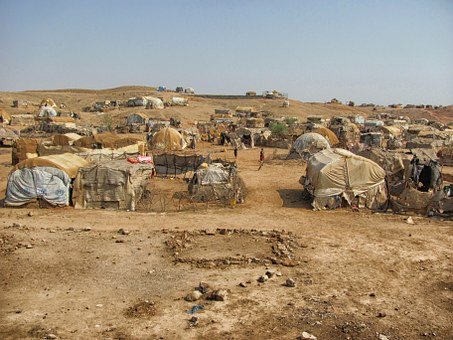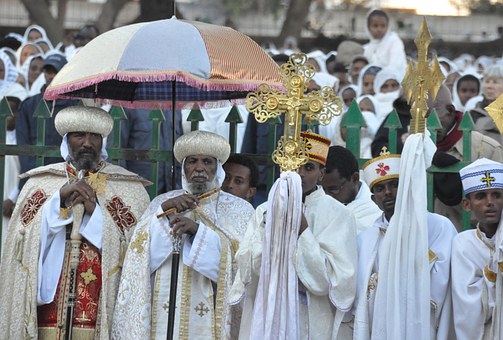| Eritrea is a country
in northern East Africa bordered by Sudan in the west, Ethiopia in the
south, and Djibouti in the southeast. The east and northeast of the country
have an extensive coastline on the Red Sea, directly across from Saudi
Arabia and Yemen. The Dahlak Archipelago and several of the Hanish Islands
are part of Eritrea. Eritrea was consolidated into a colony by the
Italian government on January 1, 1890. The modern state of Eritrea gained
its independence from Ethiopia following a thirty-year war which lasted
from 1961 to 1991. Eritrea's constitution adopted in 1997 stipulates that
the state is a presidential republic with a unicameral parliamentary democracy.
The constitution, however, was never ratified. |
| The history
of the land that is now called Eritrea, in one way or another, is associated
with its coastline on the Red Sea, which extends more than 1000 km. From
across the seas came various invaders (and colonizers) such as the South
Arabians hailing from the present-day Yemen area, the Ottoman Turks, the
Portugese from Goa (India), the Egyptians, the British and, in the 19th
century, the Italians. Over the centuries, invaders also came from the
neighboring countries of Africa to the south (Ethiopia) and to the west
(Sudan). However, present-day Eritrea was largely impacted by the Italian
invaders in the 19th century.

In the period following the
opening of the Suez canal in 1869, when European powers scrambled for territory
in Africa and tried to establish coaling stations for their ships, Italy
invaded and occupied Eritrea. On January 1, 1890 Eritrea offically became
a colony of Italy. In 1936 it became a province of Italian East Africa
(Africa Orientale Italiana), along with Ethiopia and Italian Somaliland.
The British armed forces expelled those of Italy in 1941 and took over
the administration of the country which had been set up by the Italians.
The British continued to administer the territory under a UN Mandate until
1951 when Eritrea was federated with Ethiopia as per UN resolution 390(A)
under the prompting of the United States adopted in December 1950; the
resolution was adopted after a referendum to consult the people of Eritrea.

The strategic importance
of Eritrea — because of its Red Sea coastline and mineral resources — was
the main cause for the federation with Ethiopia, which was the first step
in the annexing of Eritrea as its 14th province in 1962. This was the culmination
of a gradual process of takeover by the Ethiopian authorities, a process
which included a 1959 edict establishing the compulsory teaching of Amharic,
the main language of Ethiopia, in all Eritrean schools. The lack of regard
for the Eritrean population led to the formation of an independence movement
in the early 1960s, which erupted into a 30-year war against successive
Ethiopian governments that ended in 1991. Following a UN-supervised referendum
in Eritrea (dubbed UNOVER) in which the Eritrean people overwhelmingly
voted for independence, Eritrea declared its independence and gained international
recognition in 1993.
English is used in the government's
international communication and is the language of instruction in all formal
education beyond the fifth grade.
Eritrea is a single-party
state. Though its constitution, adopted in 1997, stipulates that the state
is a presidential republic with a unicameral parliamentary democracy, it
has yet to be implemented. According to the government, this is due to
the prevailing border conflict with Ethiopia, which began in May 1998. |

